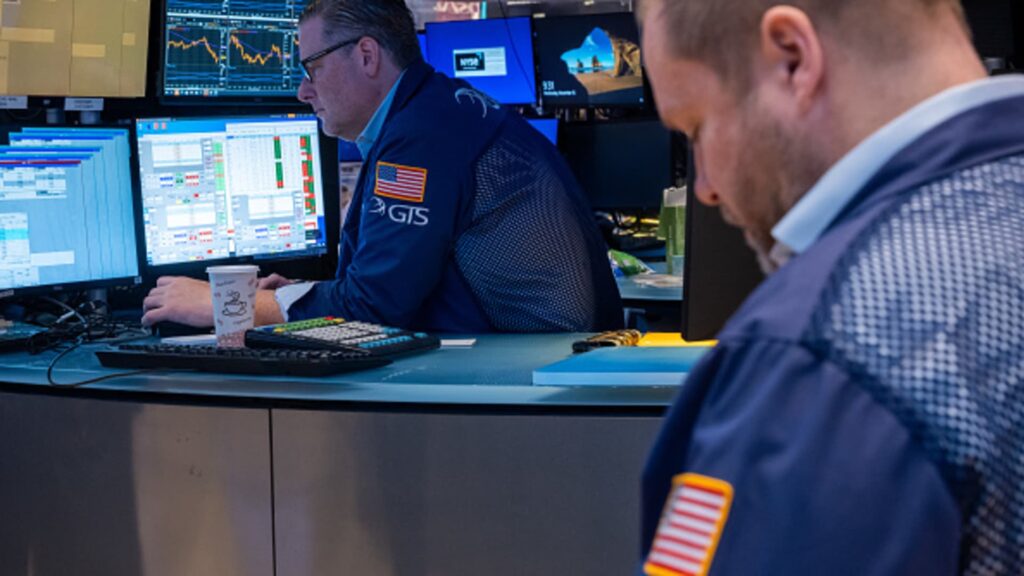[ad_1]
We are closing out an extraordinary month: The S & P 500 is up nearly 9%, its fourth-best month in 12 years. The rally has been broad-based. The equal weight S & P 500 is up almost as much as the market-cap weighted S & P 500. And the small-cap Russell 2000 , which was underwater for the year going into November, is also up nearly 9% this month. I noted yesterday that four Wall Street strategists had become members of the 5,000 club, meaning they are part of a small group predicting the S & P 500 will end at or over 5,000 by the end of 2024. The forecasts are fairly bullish. Of the 10 major financial firms, only two (Morgan Stanley and JP Morgan) see the S & P 500 lower next year. Wall Street strategists’ year-end S & P 500 estimates . Deutsche Bank 5,100 BMO Capital Markets 5,100 RBC Capital Markets 5,000 Bank of America 5,000 Barclays 4,800 Goldman Sachs 4,700 UBS Global Wealth Mgmt 4,700 Wells Fargo Securities 4,625 Morgan Stanley 4,500 JP Morgan 4,200 Source: MarketWatch You can’t blame Wall Street for being bullish Stocks have benefited from three very powerful tailwinds: 1) lower rates (10-year Treasury yields have gone from 4.90% at the start of November to 4.27%); 2) strong seasonal factors (November is the best of the year, and the fourth quarter prior to an election year is typically strong); and 3) better than expected earnings, with estimates for 2024 now rising. On Wednesday, third-quarter GDP was raised to 5.2%. The Atlanta FED GDP is now predicting respectable 2.1% growth in the final quarter of the year. And on Thursday, we got readings on the Fed’s preferred inflation gauge , personal consumption expenditures prices for October. Core PCE (ex-food & energy) come inline with expectations, with month over month up 0.2%, year over year up 3.5%. A little more than a year ago, in September 2022, it was 5.5%. So the bottom line is inflation continues to decline. October core PCE (ex-food & energy) also was in line with expectations, month over month up 0.2%, year over year up 3.5%. Stocks and bond yields were little changed, but bottom line is inflation continues to decline. GDP growth is still solid. Unemployment is still low. Inflation is falling. No wonder Wall Street is bullish. “We are once again enthusiastic about stock market potential heading into 2024,” Brian Belski, chief investment strategist at BMO Capital Markets, said in a note to clients outlining his belief the S & P would end 2024 at 5,100. “As we have contended all year, we continue to believe that US stocks are in a bull market that has now entered its second year.” What could go wrong? With all this frothy commentary, it’s worthwhile looking seeking out the opinions of the lonely minority who predict stocks will not do so well in 2024. Scott Wren from Wells Fargo Institute noted that after rallying nearly 9% this month the S & P 500 was a mere 30 points away from a new high for the year, and that it would likely face some technical resistance going into the new year. “The next stop is the record high [of 4,796 set on January 3rd, 2022]” Wren said on CNBC air late Wednesday. Wren also suggested that corporations were going to run up against pricing difficulties in 2024 and that the possibility of a recession was still very real. He said he was more favorably inclined toward bonds than stocks in 2024. That’s a good point about pricing power. The lone serious bear, JP Morgan’s head of U.S. equity and quantitative strategy, Dubravko Lakos-Bujas, has a 2024 price target of 4,200 (a drop of 8% from the current price). He made the same point in his forecast: “After a period of record pricing power, the recent disinflationary trend should become a major headwind for corporate margins amidst sticky and lagging wage trends. In fact, pricing power could outright turn negative/deflationary in some industries.” For my part, I confess to being cautious about 2024. Most of my concerns are about valuation: Analysts and strategists alike are bullish, which worries me. For example, analysts are expecting S & P earnings to expand from $220 to $245 in 2024, a 10% jump up. That puts the S & P 500 at a very rich multiple of almost 19 times forward earnings (17x is the historic norm). That would be fine if we were coming out of a notable slowdown or recession and there was an expectation the economy was expected to expand notably next year, but the former is not happening and the latter seems unlikely. This also goes to the heart of the Lakos-Bujas concern: “This type of rebound is typically seen in early-cycle or intra-cycle recoveries, not when household savings are eroding, borrow costs have reached multi-decade highs, and global demand is cooling with price disinflation,” he said.
[ad_2]
Source link













